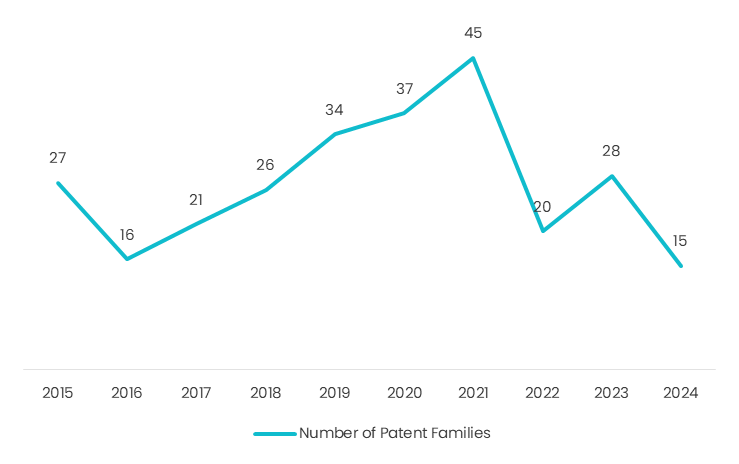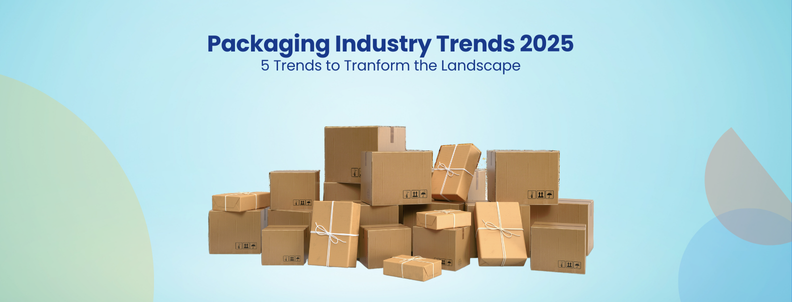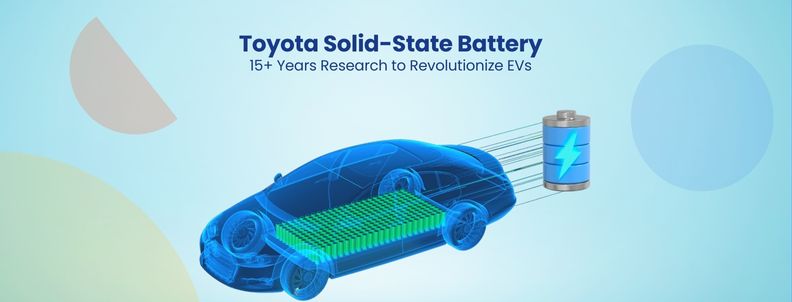The packaging industry is at a crossroads. Consumer preferences are shifting, with a growing focus on sustainability and convenience. New regulations are placing a premium on sustainability.
All stakeholders – from brand owners to converters and material suppliers – must embrace innovation to navigate this evolving landscape. We’ve identified five key trends shaping the future of packaging based on our in-depth analysis of intellectual property (IP) filings:
- Functional Packaging: Beyond Containment – Packaging is evolving beyond simply protecting products. Look for the emergence of packaging integrated with features that enhance the consumer experience, like freshness indicators or tamper-evident seals.
- The Refillables– Single-use plastics are facing increasing scrutiny. Refillable packaging models are gaining traction, offering a more sustainable approach that reduces waste.
- Next-Gen Modified Atmosphere Packaging (MAP): – Maintaining food freshness while minimizing environmental impact is a constant challenge. Advancements in MAP technologies will offer improved food preservation with eco-friendly materials.
- Minimalism: Consumers demand packaging with less waste. Expect a rise in minimalist designs that optimize product protection while minimizing material usage.
- Tech-Powered Recycling: – Recycling efficiency and accuracy are critical for a circular economy. The rise of next-generation technologies, like smart sorting with AI, promises to revolutionize recycling processes.
Download the latest Packaging Industry Trends 2025 Report by filling out the form below:
Trend 1: Functional Indicators Integrated into Packaging
This trend focuses on incorporating visual indicators directly into packaging that inform consumers about a product’s freshness, quality, or deterioration. These indicators aim to reduce food waste by guiding consumer behavior and encouraging timely consumption.
How it Works
These eco-friendly indicators can take various forms, including:
- Color-changing indicators: Dyes or inks embedded within the packaging that change color based on specific environmental factors like temperature or time, signaling when a product is nearing its expiration date.
- Gas sensors: Tiny sensors within the packaging that detect the presence of spoilage gases emitted by the food, providing an early warning of spoilage.
- Microbial indicators: Bio-based sensors that change color or texture in response to the presence of harmful bacteria, indicating potential contamination.
Top Filers and Significance
Interestingly, the top filers in patent applications for this technology are the VTT Technical Research Centre of Finland and the Korea Food Research Institute. These are state-funded research institutions with a strong focus on R&D in the food and packaging sectors. Their high activity level in this area suggests that smart label indicators are a promising area of technological development with significant potential for future commercialization.
Patent Filing Trend

Several research institutions and companies are actively involved in this area, as evidenced by the increasing number of patents filed.
Patented Solutions
1. Tokai & Kansai University
Tokai & Kansai University introduces a food packaging sheet designed to prevent the solidification of packaged food at temperatures below 0°C and serve as an indicator for gauging the extent of food decomposition.
This invention includes a layer that shows when food is decomposing and another layer that stops freezing, containing a particular peptide. It can also be designed with both features in one layer. Additionally, this invention involves an indicator that uses the packaging sheet to show how much the food has decomposed.
2. West Pak Avacado
Another example is a supply chain management system and method developed by West Pak Avocado LLC. It introduces labels for perishable products that adaptively change to convey specific product information based on environmental conditions.
These labels, equipped with visible and invisible ink, respond to factors like temperature and humidity. As the products progress through the supply chain, they encounter processing waypoints that activate the invisible ink, revealing hidden data. This innovation facilitates tracking processing steps, identifying spoilage, and rerouting products based on detected conditions.
Trend 2: Refillable Packaging
The cosmetic industry is heavy on this trend as it generates a lot of waste, with packaging discarded based on one-time use. Therefore, the industry is witnessing a significant shift towards refillable packaging solutions, driven by a growing emphasis on sustainability and consumer demand for eco-friendly products. This trend addresses the substantial waste of single-use cosmetic packaging, often in landfills or polluting the environment.
Reasons for the Rise of Refillable Packaging
- Environmental Concerns: The cosmetic industry generates significant plastic waste, contributing to environmental pollution. Refillable packaging offers a sustainable alternative, reducing the need for new packaging production and minimizing waste generation.
- Consumer Demand: Consumers are increasingly conscious of their choices’ environmental impact and actively seek brands that prioritize sustainability. Refillable packaging resonates with this growing demand for eco-friendly products.
- Cost-Effectiveness: Over time, refillable systems can be more cost-effective for consumers, as refills are often cheaper than purchasing entirely new products.
- Brand Loyalty: Brands that embrace refillable packaging can foster stronger customer loyalty by demonstrating their commitment to sustainability.
Examples of Refillable Packaging in the Cosmetic Industry
- Stella McCartney: This luxury brand offers refillable packaging for its cosmetics, inspired by the fountain pen concept. Customers can purchase refills without needing to replace the entire container.
- Cozie: This French brand specializes in refillable and returnable glass cosmetics. They offer a deposit system for returning bottles and a bulk system for in-store refills.
- Aptar: This company developed the Gaïa system, an airless refillable system where refills are inserted through the bottom of a transparent outer casing.
Patented Solutions
1. Albea Services
Albea Services SAS has developed a cosmetic product dispenser pot that features a removable refill to minimize waste and allow for the reuse of the pot. The pot consists of a base, a cover, and a refill. The refill is designed with a ring that connects to the base and cover, enabling the cover to close over the refill rather than directly on the base.
This keeps the cosmetic product in the refill to reuse the empty pot. The refill is either a flexible bag or a solid piece designed to avoid trapping the product in corners. It also includes anti-rotation features to keep it stable and ensure the cover seals properly. Additionally, the refill may have sealing elements to secure the product further.
2. Procter & Gamble
Procter & Gamble has developed a new type of refillable packaging for a deodorizer. This innovation includes a solid scent block that quickly fits and locks into a dispenser. The block has central and edge surfaces that evaporate to release the scent. You can attach this block directly to the dispenser without needing an extra refill container. When the scent fades, replace the old block with a new one. This design makes it easy to refresh the scent without discarding the entire dispenser.
Outlook
The refillable packaging trend is gaining significant momentum in the cosmetic industry. Market research indicates an increasing consumer preference for brands offering refillable options. This trend will grow as sustainability becomes a core value for consumers and brands.
Trend 3. New Progress in Modified Atmosphere Packaging (MAP)
Modified atmosphere packaging (MAP) is a well-established technology that has revolutionized food preservation by altering the gas composition within the packaging to extend shelf life and maintain product quality. As consumer demand for fresh, high-quality food increases, the MAP industry is witnessing continuous technological advancements driven by the need for more effective, sustainable, and cost-efficient solutions.
This report explores the current trends in MAP innovation, highlighting the increasing adoption of novel technologies and their potential impact on the food packaging landscape.
Growth and Increasing Adoption
The global MAP market is experiencing steady growth, with a projected CAGR of 4.5% to 8.92% over the next five years. This growth is attributed to several factors:
- Rising demand for fresh, convenient food: Consumers increasingly seek fresh, minimally processed food options, and MAP plays a crucial role in maintaining product freshness and extending shelf life, reducing food waste.
- Focus on sustainability: The industry is actively exploring eco-friendly materials and packaging techniques for MAP, aligning with growing consumer preferences for sustainable packaging solutions.
- Retail adoption: Major retailers recognize and adopt the benefits of MAP for their private label brands, leading to wider market penetration.
Patented Solutions
Traditional MAP methods involve gas flushing and barrier films to control the packaging’s oxygen and carbon dioxide levels. However, recent advancements are pushing the boundaries of this technology:
1. SOFRESH
SOFRESH INC’s invention pertains to packaging materials for storing humidity-sensitive products like food items. Traditional polymeric films are often used for packaging food, but they may not adequately control factors like moisture and oxygen levels. To address this, the present innovation introduces multilayer film constructions with active agents that release in response to humidity changes.
Technical Details:
- Packaging System Components: The system comprises multilayer film constructions containing core structural and moisture-sensitive barrier activation layers.
- Active Agent: These layers contain an active agent, like ethyl pyruvate, distributed between core layers.
- Controlled Release Mechanism: The barrier activation layers are designed to lose their barrier properties and release the active agent into the packaging space when the humidity level inside the package exceeds a certain threshold.
- Film Composition: Core layers are made of materials like polyethylene, while moisture-sensitive layers may include ethylene vinyl alcohol or polyvinyl alcohol. These layers are selected for their ability to maintain barrier properties until triggered by humidity.
- Application: The system can be used for various packaging formats, such as pouches, trays, or container lids. It’s suitable for storing food items like bakery goods, cheese, or meat, extending their shelf life by controlling moisture and preventing microbial growth.
2. Preservation System Inc
PRESERVATION SYSTEMS INC has innovated a new system for packaging food to make it last longer. Here are the key details:
- Problem: Existing modified atmosphere packaging (MAP) methods are bulky and unsuitable for home use. They also require special containers that cannot be reused.
- Solution: This invention is a handheld device that can be used with reusable containers to create a MAP environment. It works by sucking out air from the container and then replacing it with a specific gas mixture.
- Benefits: This system can be used at home to extend the shelf life of perishable foods. It is also more compact and user-friendly than existing MAP systems.
Here’s a breakdown of the solutions:
- Gases used: Depending on the food being stored, the system can use various gases, such as nitrogen, carbon dioxide, and argon.
- Refilling gas canisters: The device uses replaceable canisters filled with pressurized gas.
- Monitoring gas levels: The system can estimate the amount of gas remaining in a canister based on factors like the force required to dispense the gas.
- Sealing the container: A unique lid with an umbrella valve creates a tight seal on the container.
- Mixing gases: The lid design helps to improve the mixing of gases within the container.
Outlook
The trend towards innovative MAP technologies is expected to continue, driven by the need for sustainable solutions, improved food quality, and reduced waste. As research and development efforts intensify, we can anticipate further advancements in areas like:
- Active packaging technologies: Incorporating sensors and antimicrobial agents into the packaging to monitor and control the internal environment.
- Intelligent gas control systems: Development of automated packaging systems that dynamically adjust gas composition based on product needs.
- Personalized MAP solutions: Tailoring MAP parameters to specific food types and storage conditions for optimal shelf life and quality preservation.
Trend 4: The Rise of Minimalist Packaging: Less is More
The packaging industry is witnessing a significant shift towards minimalism, prioritizing using the least materials necessary to protect and contain a product. A confluence of factors drives this trend:
Environmental Concerns: Growing awareness of the ecological impact of excessive packaging, mainly plastic waste, prompts consumers and brands to seek sustainable alternatives. Minimalist packaging reduces resource consumption, minimizes waste generation, and contributes to a circular economy.
Consumer Preferences: Consumers increasingly value eco-conscious brands and products. Minimalist packaging aligns with this preference, demonstrating a brand’s commitment to sustainability.
Cost Efficiency: By using less material, brands can save production and transportation costs.
Focus on Functionality: Minimalist packaging emphasizes functionality over unnecessary embellishments, ensuring the product remains the focal point.
Patented Solutions
1. Nestle
Nestle’s less headspace packaging: Currently, patties and burgers are often packaged in plastic or paperboard boxes with a lot of space inside (headspace). This extra space isn’t ideal because it can shorten the shelf life of the food and generate extra waste.
Here’s the innovation: This new packaging is made from cellulose (plant material) and is shaped to fit the food closely, reducing that space to less than 10%. This is good because it helps keep the food fresh for longer without needing plastic or a vacuum sealing process (which can damage the food).
This invention achieves the core goals of minimal packaging:
- Reduces the amount of material used.
- Utilizes sustainable and biodegradable materials.
- Minimizes the need for additional processing steps
2. Local Bounti Operating Co LLC
Local Bounti Operating Co LLC has developed optimized packaging for various products, including food items like leafy greens, representing another minimalist packaging innovation.
This packaging design includes a rigid frame with sealed film surfaces that reduce weight, enhance freshness, allow gas exchange, and support sustainability by minimizing waste and utilizing recycled materials. This patent describes a new product packaging design that offers features associated with minimal packaging. Here’s the breakdown:
- Combines Rigid Frame with Films: This design uses a strong, rigid frame for the sides, and top/bottom closures are made with thinner films. This potentially reduces overall material usage compared to entirely rigid containers.
- Lightweight Films: The films are designed to be lightweight compared to the frame, further contributing to material reduction.
- Resealable Films: At least one of the top or bottom films can be resealed, allowing for multiple uses of the container and reducing single-use packaging waste.
Outlook
Minimalist packaging is a clear and growing trend in the packaging industry. This approach offers significant environmental and economic benefits from ecological concerns, consumer preferences, and cost efficiency. As innovation continues, we can expect even more creative and sustainable minimalist packaging solutions to emerge, further reducing the industry’s environmental impact.
Trend 5: Enhancing recycling through next-gen tech
The world generates a staggering amount of waste, and plastic pollution is a primary environmental concern. Inefficient recycling processes contribute to this problem. Fortunately, innovative technologies are emerging to make recycling more effective and efficient. This report explores this trend, highlighting the need for such advancements and showcasing how next-generation technology revolutionizes recycling.
The Need for Enhanced Recycling Technologies
Traditional recycling methods are often labor-intensive, inaccurate, and limited in the types of materials they can handle. This leads to lower recycling rates and lower-quality recycled materials. New technologies are required to:
- Improve sorting accuracy: Human sorters can make mistakes, contaminating recycled materials.
- Increase efficiency: Manual sorting is slow and expensive. Automation can streamline the process.
- Enhance material recovery: New technologies can handle various recyclable materials, including complex plastics.
Patented Solutions
Several companies and startups are actively contributing to this trend:
1. Hitachi
Hitachi’s improving plastic recycling using machine learning. Usually, it’s difficult to know precisely what plastic a recycled item is made from and how well it can be recycled. This makes it hard to know what additives (unique ingredients) to mix with the recycled plastic to make it solid and valuable again.
This invention uses a clever method to solve this problem. Here’s how it works:
- Plastic waste is analyzed using a surface scanner, which creates a detailed picture of the plastic’s texture.
- A computer model can estimate the plastic’s original properties and how much it has degraded (worn down) over time based on this picture.
- Finally, the program calculates the perfect recipe of additives to mix with the recycled plastic, considering its original properties and current condition.
With this new technology, recycling plants can more accurately predict how well plastic waste can be recycled and what needs to be added to make it functional again. This should lead to more and better quality recycled plastic products!
2. PACCOR Packaging
PACCOR PACKAGING GMBH has developed a new approach to improve recycling, especially for plastic packaging.
Traditionally, plastic packaging might have a general recycling symbol, but the type of plastic used should not be specified. This makes it difficult to sort the recyclables accurately for better reprocessing.
This new method tackles this issue by:
- A unique code is added to the packaging material to identify the specific materials used.
- Using machines that can read this code during recycling.
Recycling plants can precisely sort the plastics by knowing the exact materials from the code. This allows for better-quality recycled products because the suitable materials are reprocessed together.
Outlook
These patent examples showcase the diverse ways next-generation technologies are transforming the recycling landscape. From optimizing plastic recycling to automating sorting and creating online marketplaces for industrial byproducts, innovation is addressing key challenges.
As these technologies mature and gain wider adoption, we can expect significant improvements in recycling efficiency, accuracy, and the range of materials that can be effectively recycled. This will contribute to a more sustainable future with reduced waste and a more circular economy.
Download our Packaging Trend Report today to learn what packaging trends will look like and how they will impact other industries.










